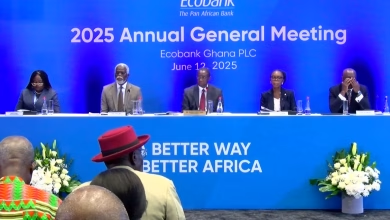Ghana’s Non-Traditional Exports On The Rise: Reaching For A $25 Billion Goal

- Ghana makes significant strides in non-traditional exports
- GEPA is the driving force behind this growth
- The journey to reach the $25 billion target is ongoing
Ghana is making significant strides in boosting its non-traditional exports, reaching nearly $4 billion in 2023.
This impressive 11% increase from the previous year brings the country closer to its ambitious target of $25 billion by 2029, as outlined in the National Export Development Strategy (NEDS).
The Ghana Export Promotion Authority (GEPA) is the driving force behind this growth. They’ve implemented several successful initiatives, including:
- Supporting Farmers: Programs like coconut and pineapple expansion projects equip farmers with essential resources to meet the growing export demand. This approach has solidified Ghana’s position as a leading African source for these products.
- Market Access for Producers: GEPA actively promotes Ghanaian products on the global stage through trade fairs and international expos. This allows exporters to focus on production, while GEPA handles the marketing side.
- GEPA Impact Hub: This state-of-the-art facility equips exporters with free market research tools and a global market database. This eliminates expensive individual subscriptions and empowers data-driven decisions.
Challenges and Solutions:
Despite the progress, Ghana still faces hurdles:
- Meeting Export Demand: While some producers have secured market access, they struggle to fulfill large orders. GEPA offers solutions:
- Capacity Building: Exporters are encouraged to participate in GEPA’s Export School and other programs to enhance large-scale production.
- Consolidation: GEPA facilitates the consolidation of goods from Small and Medium Scale Enterprises (SMEs) to address their logistical challenges.
- Financial Needs: GEPA highlights the need for additional government funding, estimated at $2 billion, to achieve the NEDS target.
Looking Ahead:
GEPA remains optimistic about reaching the $25 billion goal by 2029. Here are some promising developments:
- The Trade House in Kenya: This one-stop shop for Ghanaian products serves as a model for future international ventures.
- Collaboration with Farmers: GEPA is working with the Ghana Roots, Crops and Tubers Exporters Union to improve the performance of yam and other related products in the international market.
- NEDS Review: A planned review of the NEDS document will assess current progress against the 2020 vision.
Ghana’s export ambitions are fueled by a combination of resourceful initiatives, strategic partnerships, and a commitment to empowering local producers. The journey to reach the $25 billion target is ongoing, but with continued focus and collaboration, Ghana is poised to become a major player in the non-traditional export market.






